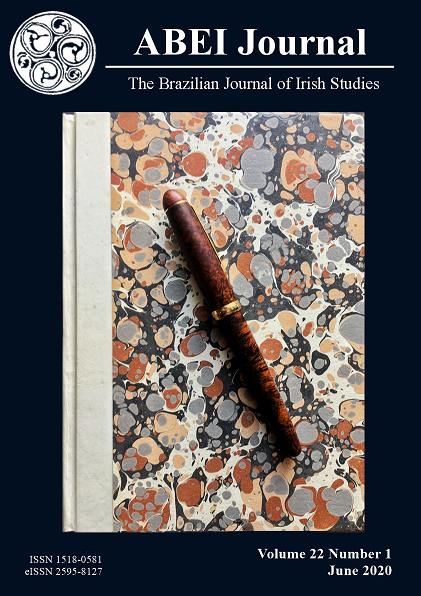Simultaneous Past and Present in The Sea
DOI:
https://doi.org/10.37389/abei.v22i1.3459Keywords:
Simultaneous Past and Present, Tense Switching, Alternative space, Act of narrationAbstract
Time is complex in Banville’s novels in that they constantly feature tense switching, chronological confusion, and characters who are always casting a look back to the past for an escape from the present. In The Sea, Banville’s experimentation with tenses reflects his conception of time, particularly, the complex relationship between past and present. Part one of this article, focusing on Max’s childhood memory, examines how the blurring of the past and present selves, resulting from frequent tense switching and the notable use of the historical present, destabilizes the temporal gap between the narrator and the narrated within retrospective narration. Part two, concerning Max’s present, proposes to compare the portrayal of the present-day Cedars in the two parts of the novel, and proves the present to be elusive since Max’s experience is not contemporaneous with the time of narration. Drawing on Max’s various experiences of an alternative space, part three proceeds to argue that Max’s entire act of narration constructs a similar alternative space where past and present are engendered simultaneously. The dubious existence of the self in this alternative space suggests a defiance against the deictic center as I- herenow.
References
Banville, John. “Making Little Monsters Walk.” The Agony and the Ego: The Art and Strategy of Fiction Writing Explored, edited by Clare Boylan, Penguin Books, 1994, pp. 105-12.
---. The Sea. Picador, 2005.
---. Time Pieces: A Dublin Memoir. Hachette Books Ireland, 2016.
Bartkuvienė, Linara. “I Mourn Thee Now: Nostalgia in John Banville’s Novel The Sea.” History, Memory and Nostalgia in Literature and Culture, edited by Regina Rudaitytė, Cambridge Scholars Publishing, 2018, pp. 81-102.
Cohn, Dorrit. The Distinction of Fiction. Johns Hopkins UP, 1999.
---. Transparent Minds: Narrative Modes for Presenting Consciousness in Fiction. Princeton UP, 1978.
Currie, Mark. About Time: Narrative Fiction and the Philosophy of Time. Edinburgh UP, 2006.
Fleischman, Suzanne. Tense and Narrativity: From Medieval Performance to Modern Fiction. Routledge, 1990.
Friberg, Hedda. “John Banville and Derek Hand in Conversation.” Irish University Review, vol. 36, no. 1, 2006, pp. 200-15.
Hand, Derek. A History of the Irish Novel. Cambridge UP, 2011.
Haughton, Hugh, and Bryan Radley. “An Interview with John Banville.” Modernism/modernity, vol. 18, no. 4, 2011, pp. 855-69.
Huber, Irmtraud. Present-Tense Narration in Contemporary Fiction: A Narratological Overview. Palgrave Macmillan, 2016.
Imhof, Rüdiger. “The Sea: ‘Was’t Well Done?’.” Irish University Review, vol. 36, no. 1, 2006, pp. 165-81.
Izarra, Laura P. Z. “Review of the Sea by John Banville.” Estudios Irelandeses, no. 1, 2006, pp. 142-7.
McCarthy, Karen. “A Fool’s Errand: Blanchot, Mourning and the Sea.” John Banville and His Precursors, edited by Pietra Palazzolo, Michael Springer and Stephen Butler, Bloomsbury Academic, 2019, pp. 165-76.
Murphy, Neil. John Banville. Bucknell UP, 2018.
Downloads
Published
Issue
Section
License
Copyright (c) 2020 Lianghui Li

This work is licensed under a Creative Commons Attribution-NonCommercial 4.0 International License.


